The Benelux Gathering
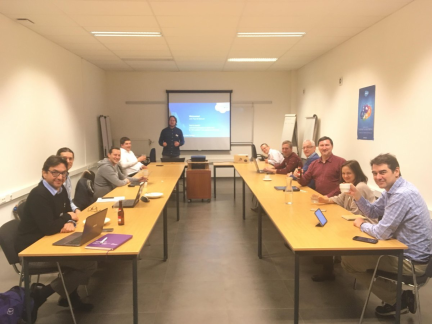
If you’re going to get user group leaders from 3 countries into one room, you had better make good use of their time. This is a write-up of the thinking that went into the January 2018 meeting of all the Benelux User Group leaders.
This article deliberately includes the small warts we encountered as I feel honesty is the best in helping us all understand the potential challenges and learn how to deal with them.
Background
Just in case you don’t know Benelux is the name given to the collection of countries that is Belgium, Netherlands and Luxembourg, arising from a customs agreement signed in 1944, became a founding part of the EU. 29 million inhabitants at the last count and 74,657 km2 (28,825 sq mi) in size.
As of January 2017 there were 7 user groups and 0 Saturday Salesforce group. As of January 2018, there are 13 user groups and 3 on Saturdays. The groups cover general knowledge, developer, non profit, Pardot and Women in Technology.
So why did we decide to have the meetup?
There were a number of reasons:
-
- We‘re nearby and can support each other with connections, ideas and content;
- It was an easy way for the groups to meet the larger network and benefit from all our
pain experience in terms of what works and what doesn’t (a.k.a. “best practice”);
- We didn’t want to step on each other’s toes (nearby groups repeating content in too short a timeframe, or – even worse – having a date clash);
- We’re sociable
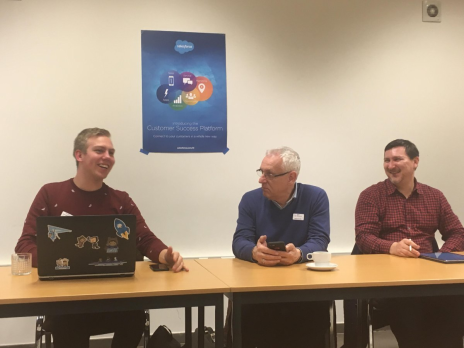
How did it get organised?
So a few points here: we’re fortunate in our collective to have certain individuals who come up with fantantistic ideas all the time (in fact almost too many ideas, but that’s another story!), but it still requires a bit of focus and someone to say “I’ll take it forward”.
We had had a Netherlands drinks evening with a few user group leaders the previous Summer and we said that we really ought to do it again. I therefore selected an evening date at random and asked everyone to put it in their diary, including sending calendar invites.
We booked the date 6 months in advance, noting that there was no point in checking for people’s availability as it was bound to change due to client commitments, but better to start with something. The only things we did was decide on the day of the week so that one of our members was more likely to be available.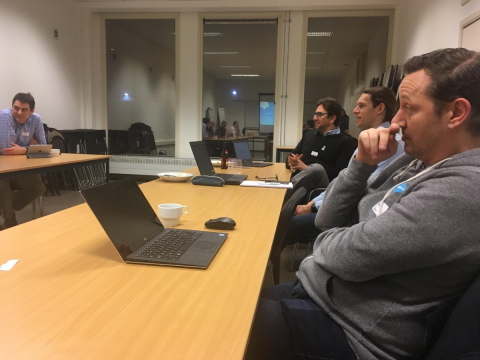
We choose a location that was fairly central (which was easy as one of us had an office building that would be suitable) and we crowd-sourced contact details amongst ourselves as no one knew everyone, but between us we thought we covered the whole crowd.
As self-nominated organiser I then sent out a calendar invite, emails, Slack messages and WhatsApp messages to everyone.
Prep Work
I then approached my boss at work to see if my employer would sponsor the catering, and he agreed, so that was one less headache; it could then be forgotten about until much nearer the time.
The only other thing I did was occasionally mention the event to new user group leaders as and when I bumped into them, to remind them and hopefully ensure that it was in their diaries (and then to follow up by sending them the calendar invite).
6 weeks before
6 weeks before the event, I did two things. I’ve added a third item which I actually did on the day, but far easier to do it in advance.
1. Worked out the agenda
This was an interesting process as we are all volunteers and there’s no one in charge, but equally I wanted to ensure that we made best use of everyone’s time. Therefore I drew up a proposed agenda and sent it out – via Google Doc (other platforms are available!) – asking for feedback. To be honest I didn’t receive any particularly strong feedback beyond, when pressed, friends saying “it looks ok” or “I haven’t had time to read it yet”. No alarm bells rang for anyone, so I was happy enough. For the actual agenda please see later.
2. Attendance
I asked everyone to fill in a Google Spreadsheet ostensibly asking them for their dietary requirements and whether they needed accommodation organised or were willing to car-pool. This was a feint, as what I wanted to do was focus people’s attention on the fact that they were actually coming and they needed to organise their travel and book their accommodation if required; I also wanted to ensure everyone was reading the messages I sent.
After a couple of weeks (so 4 weeks beforehand) I then started reaching out individually to those that hadn’t responded; about a third needed chasing, for a whole variety of reasons. And chase I did: text, phone, whatsapp, Slack and email, asking other user group leaders to nag their co-leaders – whatever it took 🙂 I wasn’t surprised by this as we all have other commitments and each person has a “best” contact method. It paid off as we got a 100% response rate. 18 available out of 24.
Colleagues then pointed out that certain names were missing from the list: people had left, people had come or were thinking about being a co-leader. We also thought that there was a new group, but we had no connections to the co-leaders whatsoever. So we updated the list, and then started working on the new group.
User Group Missing in Action(!)
We sent a LinkedIn connection request to one of the leaders, but that didn’t get a response (the request was accepted, but no communication was started); we applied to join their Success Group but that was ignored; then one of our MVPs started to see if they could make any headway and identify extra user group leaders. To be honest, it looked as if we were getting nowhere; the Community Group Support Team let us know that User Groups do run into problems from time to time and they had processes for dealing with this (starting out with gently reaching out, but going all the way up to changing the leaders if necessary), but we didn’t want to invoke that yet.
On the day of the meeting itself, we received an email from one of the group’s leaders. It turns out that the previous co-leader had left and the ball had been dropped; the lack of communication was explained, and the leader drove all the way over to ensure they could come to the meeting. A huge win for all concerned because the user group realised that they now had access to a wider support network.
3. Contact Sheet
I created a sheet with everyone’s name, group, linkedin profile link, twitter handle, preferred email address for circulation after the event, including phone number for those that were happy to give this out.
Agenda
And this was our agenda (12-hr)
|
4:00 PM
|
Room prep/running around/ trying to finish work |
|
6:00 PM – 6:30 PM
|
Arrivals
|
|
6:00 PM – 6:45 PM
|
Food |
|
6:45 PM
|
Welcoming the Ohana |
|
6:55 PM
|
Silly fact time! |
|
7:10 PM
|
Breakout 1: The Best User Group Sessions |
|
7:50 PM
|
Regroup & Recap |
|
8:05 PM
|
Refreshments |
|
8:15 PM
|
Breakout 2: Choice |
|
8:45 PM
|
Breakout 3: Choice |
|
9:15 PM
|
Formal Close
|
How did I come up with this?
“Welcoming the Ohana”: I asked one of our MVPs to present on this as it’s one of the most inspiring topics for me and what it’s all about: paying it forward and the rewards it brings; I hoped it would also bring some formality back to the group and start to concentrate minds. Writing this blog, I now realise that this item should have come after “Silly Fact Time”.
Silly Fact Time: We asked everyone to say their name, and then give a silly or personal fact about themselves. I wanted to start to get everyone to connect personally and warm up/change gear after a working day; the trouble was there simply wasn’t going to be time for everyone to explain about their personal calling as a user group co-leader, if we wanted to get anything else done, this spot had to be short. As it happened, it allowed time for late-comers to join us without missing out, and characters still emerged even with the short time window given.
Best User Group Sessions: What better way to focus attention than discussing the very best of user groups, and what it takes for them to work successfully? As there were 13 of us that actually showed up (verses 18 than said they would be coming 24 hours beforehand), we split into two groups (6/7 people in each group being an ideal number as it happens; as this allows each person more time to speak and means that “wallflowering” is less likely) and went our separate ways to discuss this. At this point it was decided that we didn’t need the 40 minutes scheduled for this activity and 20 minutes would do. After 20 minutes, we decided we were enjoying it too much, checked with the other group, went back to the original 40!
Breakouts 2 & 3: Originally the plan was to have two breakout suggestions. In my email sent 6 weeks in advance I highlighted 6 common topics and invited suggestions for more. I didn’t receive anything, so this was the list on the night:
-
-
-
-
- What tools do more people find useful for organising meetings
- Activity ideas
- Marketing (spread the word!)
- Sponsorship (how to get it; how to use it; how to balance it)
- Training & Upskilling (presentation skills; running session skills)
- Salesforce knowledge / how to find speakers
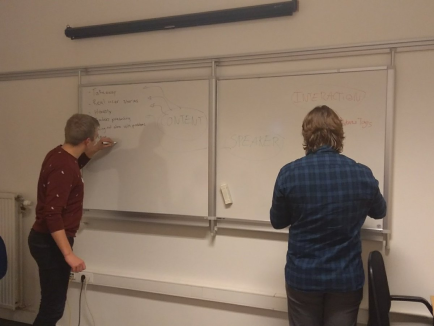
As we were running late we decided to do one session instead of two. I read out the list of topics, we had a brief discussion about what they actually meant, and then we voted by a show of hands.
We actually went with sponsorship for one group, and another group went and tackled training, upskilling and how to find speakers. After 40 minutes we returned and presented our findings. I’m not going to share those findings here for a few reasons: every locality is different and has different cultural challenges, but mainly this article is too long already. That said, you can run a similar exercise so you can discover the power, ideas and knowledge you already have in your own area! 😛
Formal Close
So the meeting then ran for to a formal close at the previously agreed time so that those driving long distances could arrive back at home not too long after midnight; I went out with a few others and found a new bar which greatly improved my perception of Brussels (while also having useful chats); and a sub-group was formed to think about creating a larger Benelux event…
Was it worth it?
Ok, I was a bit cocky and I thought that all of us user group leaders meeting would be a Good Thing, but the results firmly came into the category of “exceeding expectations”. It was a shame, but inevitable that not everyone could make it. Being honest, I thought that some who didn’t attend would have benefitted more than others (there’s always the risk of preaching to the converted) but how to reach out to those is perhaps a different blog. So the benefits:
-
-
-
-
- Putting names to faces
- Remembering why we do this (it’s important, as sometimes the challenges of sorting out logistics can wear me/us down)
- Coming up with new ideas for user groups, but also ideas beyond those constraints
- Checking that we were all on the same level in terms of how we operate (e.g. one group had stringent vetting procedures on members, and found our feedback useful in terms of our experiences; they will now try letting in a wider circle of interested parties and see how it goes)
- Learning about the resources available; we all learned new things, no one person had all the knowledge
- It was fun!
Thank Yous
In no particular order:
-
-
-
-
- The Together Plan, which focuses on capacity building in the former Soviet Union (particularly Belarus); I have been involved with over the last few years. As with all charity (and user group) volunteering the payback is 1000-fold. You’ll be happy to know that they use Salesforce of course 🙂
- My mentors at the London Admin User Group, who showed me what was possible when I was a wee lad/member (or “led by example”, as it is otherwise known) and continue to support me even though I have abandoned their shores
- My colleagues in the Benelux user group network, both those that were there on the night, and those who weren’t available on that single date but have inspired throughout
- The Community support team and wider User Group leaders community. Meeting lots of you at Dreamforce in November was an inspiration, realising that we all have different experiences and also that the challenges vary from locality to locality, so we have to come up with local solutions
- The Success team (and this very much includes my local Success team from Salesforce NL; we have one chap in particular whose support and encouragement helps give us the confidence to try new things, and that we’re not doing this alone)
By Paul Ginsberg, Salesforce Amsterdam User Group Co-Organiser
LinkedIn link: https://www.linkedin.com/in/paulginsberg/
Twitter link: https://twitter.com/NaturallyPaul
 When I attended my first ever Salesforce user event in 2016, I was blown away by the massive amounts of information and people to meet in the Salesforce ecosystem. I experienced the “fire hose” effect if you will at that event and was hit with every part of it within an 8 hour period. As much as I enjoyed that event, I had wished there were smaller, more intimate events to openly ask questions, collaborate, and make connections with those in the community to kind of “ease” my way into it. I discovered user groups, but the closest meetings for user groups were mid week after hours, and at least 30-40 minutes away. I’m not sure where you’re from, but a 30-40 minute drive in 5-5:30pm traffic in the metro Philadelphia area can easily take you 1.5-2 hours sitting in traffic, so its safe to say that I gave that commute a big ole’fashioned “nope”.
When I attended my first ever Salesforce user event in 2016, I was blown away by the massive amounts of information and people to meet in the Salesforce ecosystem. I experienced the “fire hose” effect if you will at that event and was hit with every part of it within an 8 hour period. As much as I enjoyed that event, I had wished there were smaller, more intimate events to openly ask questions, collaborate, and make connections with those in the community to kind of “ease” my way into it. I discovered user groups, but the closest meetings for user groups were mid week after hours, and at least 30-40 minutes away. I’m not sure where you’re from, but a 30-40 minute drive in 5-5:30pm traffic in the metro Philadelphia area can easily take you 1.5-2 hours sitting in traffic, so its safe to say that I gave that commute a big ole’fashioned “nope”.
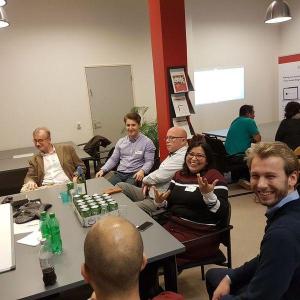
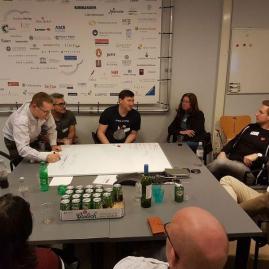
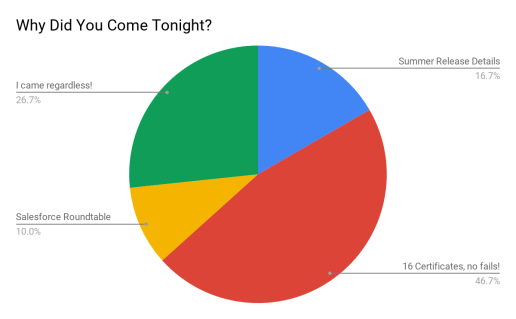





 Start with the person that is you primary connection to Salesforce, your AE. They will often (results may vary) email other local admins in your area on your behalf to let them know your group exists. They will also often help identify regional users and possible vertical users in your area. Additionally hit up your Marketing Cloud Rep, Data.com rep, etc. Last, but certainly not least…don’t ask your rep for a list of contacts. Due to Salesforce’s policy on privacy and protecting confidential information they won’t send it to you, and that’s a GOOD thing!
Start with the person that is you primary connection to Salesforce, your AE. They will often (results may vary) email other local admins in your area on your behalf to let them know your group exists. They will also often help identify regional users and possible vertical users in your area. Additionally hit up your Marketing Cloud Rep, Data.com rep, etc. Last, but certainly not least…don’t ask your rep for a list of contacts. Due to Salesforce’s policy on privacy and protecting confidential information they won’t send it to you, and that’s a GOOD thing!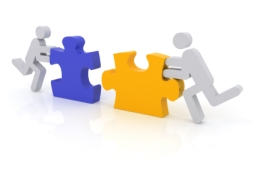 n the User Groups that are in your region, if you haven’t already. You can find them
n the User Groups that are in your region, if you haven’t already. You can find them 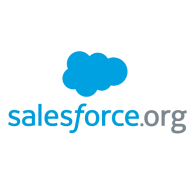 Salesforce.org, simply put is all things non-profit at Salesforce. Do you know what local non-profits use Salesforce that might be interested in your group? Want to connect with them? Simply post your meeting to
Salesforce.org, simply put is all things non-profit at Salesforce. Do you know what local non-profits use Salesforce that might be interested in your group? Want to connect with them? Simply post your meeting to 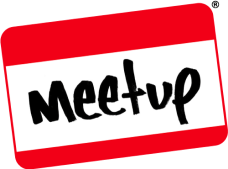 I know, to Admins and End User, Developers are a scary bunch. But guess what? Most of them are pretty cool people and they are just as passionate about Salesforce as you are. Most of them either are admins as well, or they work very closely with one or more. Think R2D2 and C3PO (Of course we are R2D2.)
I know, to Admins and End User, Developers are a scary bunch. But guess what? Most of them are pretty cool people and they are just as passionate about Salesforce as you are. Most of them either are admins as well, or they work very closely with one or more. Think R2D2 and C3PO (Of course we are R2D2.) Salesforce has hundreds of partner organizations dedicated to successful implementations and building apps that plug into the Salesforce platform. These partners want to connect with you just as badly as you want to connect with you local users. Leverage them. Let the partners you work with know that you are building your group and if they can let customers in your region know you are out there. Most (results will vary) will be happy to do this. Build a good relationship and you just might pick up a sponsor for your meeting. Be sure to control the relationship though! Review our
Salesforce has hundreds of partner organizations dedicated to successful implementations and building apps that plug into the Salesforce platform. These partners want to connect with you just as badly as you want to connect with you local users. Leverage them. Let the partners you work with know that you are building your group and if they can let customers in your region know you are out there. Most (results will vary) will be happy to do this. Build a good relationship and you just might pick up a sponsor for your meeting. Be sure to control the relationship though! Review our 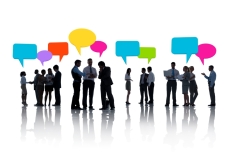 Hit local or regional events, and don’t be afraid to travel a bit to find these. If there are users out there and they are passionate about Salesforce like you, they will travel. Talk to everyone! Use the 3 foot rule – at an event if there is someone within 3 feet of you ask them what they do and where they are from. You will meet some really cool people! Also when traveling wear a Salesforce shirt. Its amazing how this starts conversations.
Hit local or regional events, and don’t be afraid to travel a bit to find these. If there are users out there and they are passionate about Salesforce like you, they will travel. Talk to everyone! Use the 3 foot rule – at an event if there is someone within 3 feet of you ask them what they do and where they are from. You will meet some really cool people! Also when traveling wear a Salesforce shirt. Its amazing how this starts conversations. Challenge your members to each bring one or two friends to a meeting. Your members know other admins. Utilize their networks.
Challenge your members to each bring one or two friends to a meeting. Your members know other admins. Utilize their networks.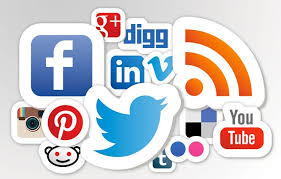 Post your events on social medial platforms. Your friends on Facebook likely know someone other than you that uses Salesforce, so ask them to spread the word. Use Twitter, my favorite platform, and be sure tag Salesforce and your region. Post pics of your meetings on Instagram. On LinkedIn add “User Group Leader” with your location or group name to your profile. Keep trying, persistence is key. There is so much content and it moves so fast that it will likely take a few posts to get attention.
Post your events on social medial platforms. Your friends on Facebook likely know someone other than you that uses Salesforce, so ask them to spread the word. Use Twitter, my favorite platform, and be sure tag Salesforce and your region. Post pics of your meetings on Instagram. On LinkedIn add “User Group Leader” with your location or group name to your profile. Keep trying, persistence is key. There is so much content and it moves so fast that it will likely take a few posts to get attention. Engage the MVP community and let them know about your group. MVPs will help promote your group where they can and the “star power” of having an MVP present (or presenting!) is sure to bring a good group of attendees.
Engage the MVP community and let them know about your group. MVPs will help promote your group where they can and the “star power” of having an MVP present (or presenting!) is sure to bring a good group of attendees.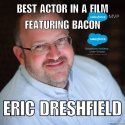 Seriously…This guy knows everyone. He’s the
Seriously…This guy knows everyone. He’s the 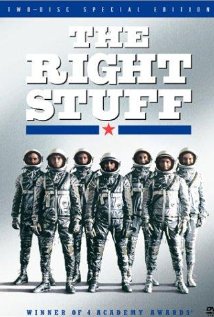


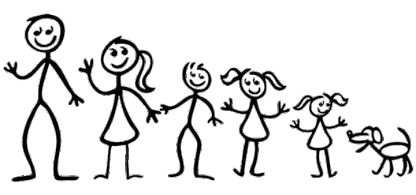
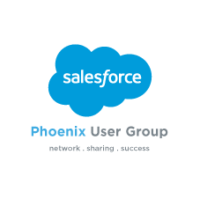
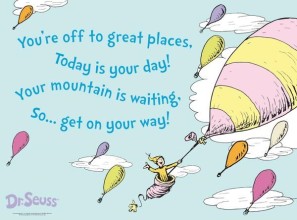
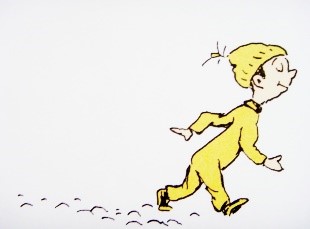 All of that is quite a bit to consider… So what venues have we seen user group leaders use? Here is a short list of some of the venues that have been suggested. Keep in mind not all venues will meet needs for all meetings. Be creative. If you see unused meeting space, it’s worth asking about.
All of that is quite a bit to consider… So what venues have we seen user group leaders use? Here is a short list of some of the venues that have been suggested. Keep in mind not all venues will meet needs for all meetings. Be creative. If you see unused meeting space, it’s worth asking about.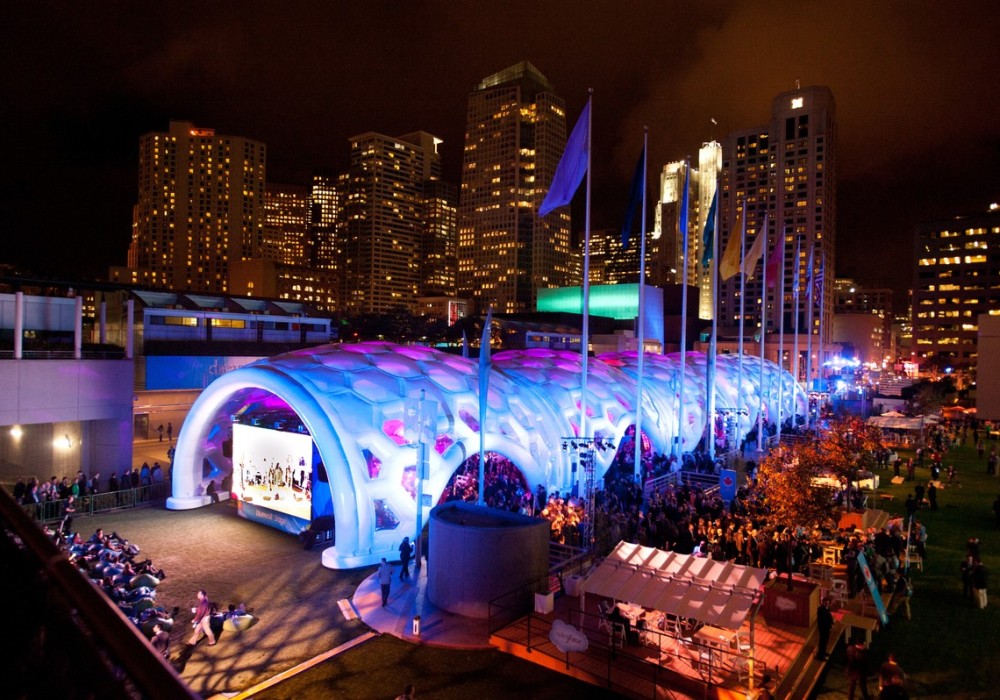
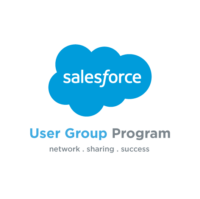
You must be logged in to post a comment.